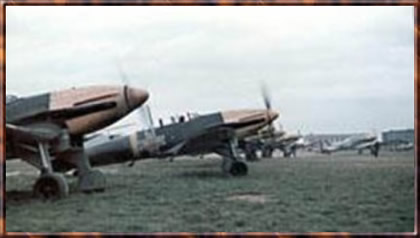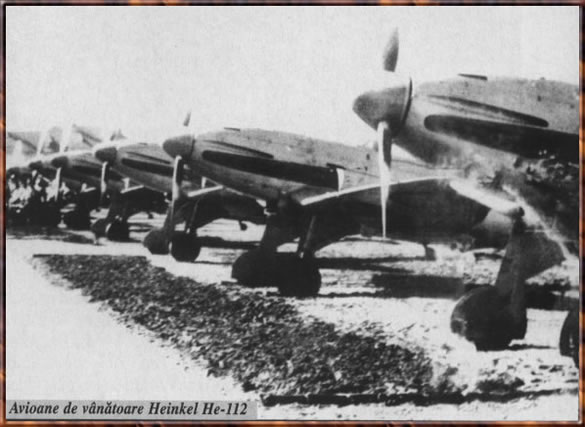This was mainly for two reasons : the He-112 was a very complex machine to build, particularly because of its advanced but extremely difficult to build wings, and, furthermore it was a very expensive aircraft. Clearly these were serious disadvantages for a plane supposed to be enter mass-production ( and quickly ! ) so the Bf-109 was chosen as the new main fighter of the Luftwaffe. A small batch of He-112A's was still ordered to see if something could be done in time to improve the design and to be used for demonstration flights at air shows, hoping to obtain orders from other countries.
In 1936, the plane was improved, creating the B version. It had a new, completely redesigned fuselage, a new vertical stabilizer and a fully-enclosed cockpit. Several more powerplants were tested, such as the DB600A, DB601 and the Junkers Jumo 211Ga. The DB-600 powered He-112 was actually 20 km/h faster than the Bf-109B but the RLM saw no reason to put two roughly similar designs into production. The He-112B2 settled with the Jumo 211Ga and entered production in late 1936, whilst its three prototypes spent the second half of 1937 flying at air shows and touring Europe, in an effort to convince other air forces that the plane was worth its price ( the cost of a single He-112B was 163278 Reichmarks ). One of the prototypes even saw action with Condor Legion in Spain, where the cannon-armed He-112B performed well as ground-attack aircraft. Several nations expressed interest, namely Japan, Austria, Finland, Hungary, and, the very last one, Romania.
Romania had realized by 1938 that war was inevitable, so a delegation was sent to the traditional aircraft suppliers to purchase any modern planes available. After several unsuccessful attempts, when they arrived in Germany, they were offered the excellent Bf-109, but there was a catch : deliveries could begin only after production exceeded Luftwaffe needs. Since this was a remote possibility, the ARR had to settle for 30 Heinkel He-112B's that could be purchased right away.

